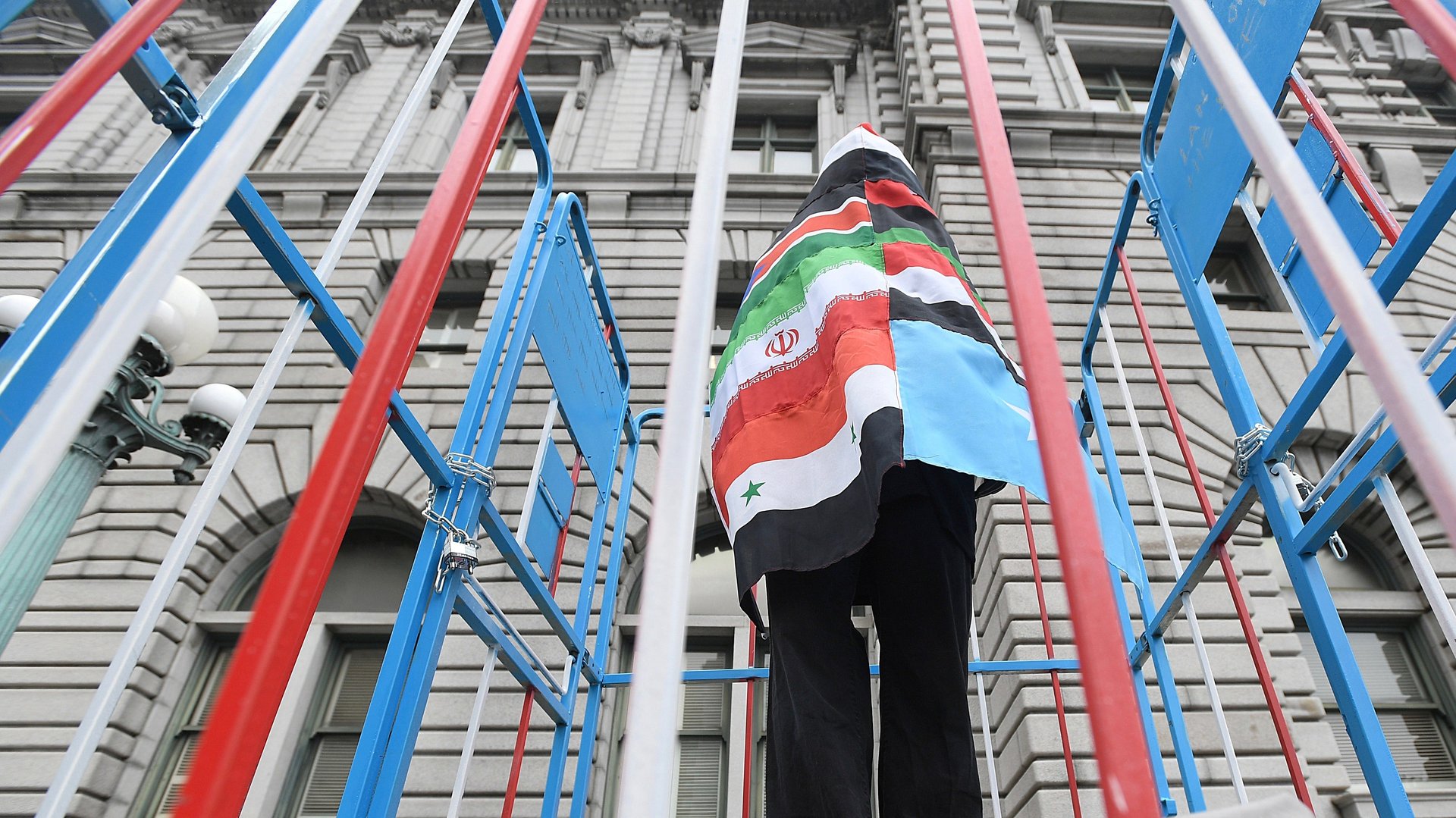Where the lawsuits over Trump’s travel ban go from here: a legal scholar explains
US president Donald Trump’s Jan. 27 executive order restricting entrance to the US for people from several countries and halting the refugee program set off a spate of legal challenges in federal courts—and a bit of a procedural mess.


US president Donald Trump’s Jan. 27 executive order restricting entrance to the US for people from several countries and halting the refugee program set off a spate of legal challenges in federal courts—and a bit of a procedural mess.
There’s a range of ways the various cases could play out. To figure out what path the president’s order will take to its ultimate resolution, Quartz consulted a constitutional law scholar: Erwin Chemerinsky, the dean of UC Irvine’s law school.
Where things stand
After president Trump issued his edict in late January, temporarily restricting travel to the US for people from seven mostly Muslim nations, border patrol agents immediately began detaining people at airports. Several states—New York, Massachusetts, and Washington—and non-profit organizations sued the government on behalf of those detainees, arguing that the order violated constitutionally guaranteed due process protections and freedom from religious discrimination.
Washington state filed a complaint and a request for an immediate nationwide temporary restraining order on enforcing the ban, pending litigation. A federal judge in district court in Seattle granted that request in State of Washington v. Trump, issuing a 90-day national stay. Enforcement of Trump’s order was temporarily halted nationally.
The federal government appealed the district court’s ruling to the Ninth Circuit Court of Appeals, which sits in San Francisco and weighs federal cases from several Western states, requesting that the temporary restraining order be lifted. That request was denied on Feb. 9 in a 29-page unanimous opinion (pdf), indicating (but not finally deciding) that Trump’s order was constitutionally flawed and that the government wasn’t likely to succeed in its case, based on apparent due process and religious discrimination violations.
Will the nation’s highest court take the case?
The government now has the option to appeal the Ninth Circuit ruling to the US Supreme Court, but so far the Department of Justice hasn’t expressed an intention to do so, and Chemerinsky doesn’t believe it will. Even if the DoJ does decide to appeal the ruling to the Supreme Court, the nation’s highest court may not hear the matter. Four justices must agree to hear the appeal.
If the Supreme Court does hear the case, to actually reverse the ruling by the Ninth Circuit and reinstate enforcement of the executive order, five justices would have to agree that Trump’s edict passes constitutional muster.
If the DoJ doesn’t appeal to the Supreme Court, Chemerinsky explains, the Washington case would go back to Seattle district court for a full review in March. The question of whether to extend the temporary nationwide restraining order will come up in that case again as the litigation continues.
What if other courts come to different conclusions?
Meanwhile, other cases opposing Trump’s executive order, filed in federal district courts around the country, will also be heard, and likely appealed to other appellate circuits. The US government is the defendant in all of these cases, which may be decided differently across the country.
Chemerinsky says that each appellate circuit will “decide for itself” whether the order is constitutional. But if the nation’s appeals courts end up split, deciding the same matter differently, the high court will certainly take the case, he said.
Just how long it will take for the various cases to play out is anyone’s guess. Chemerinsky says: “I imagine it all would happen quickly, not years.”
Could Trump rewrite the order?
In its brief requesting emergency relief to the Ninth Circuit last week, the federal government suggested that it would rewrite the executive order to repair any alleged constitutional flaws (without admitting any such flaws).
What happens next, he says, would depend on how a new order is written—if it is written. The court was unmoved by the government’s arguments regarding redrafting, but theoretically a rewrite could avoid constitutional due process violations by providing the required notice and including the opportunity for a hearing. Similarly, Chemerinsky explains, the government could redraft the order to avoid applying it only to mostly Muslim nations and escape the religious discrimination claims.
A new executive order would most likely invalidate the current cases. Normally, for a case to be heard, there must be an actual live controversy. The courts don’t decide theoretical questions. So if Trump issued a replacement edict that didn’t raise the same constitutional alarms, the existing cases would become irrelevant and no longer subject to judicial review, based on the legal “mootness doctrine.”
Still, there are exceptions to almost every rule, including this one: The existing cases could be litigated anyway, Chemerinsky explains, if the plaintiffs (the states and organizations suing the government) won an exception that allowed them to continue fighting the original version of the ban. But he doesn’t believe that plaintiffs challenging the Trump ban would want to do so.
For now, the executive order and the challenges to it are still wending their way through the nation’s courts. Where they’ll end up remains to be seen.